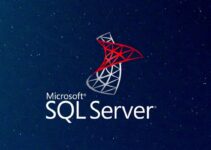A database is a repository of digital information designed to make it easier for businesses and organizations to retrieve, organize, and manage valuable data. Users can use the contents of a database to perform various tasks, such as storing and retrieving information, organizing and retrieving data sets, performing calculations, and much more.
A database can be used in a number of fields, such as business intelligence, data mining, biomedical research, and more. Therefore, it is essential to have a good database in order to make informed decisions on the basis of data. Contact Managed IT Services Boston experts to create an effective database for your business.
Every industry has its own specific set of data that needs to be analyzed for better decision-making. A good database will help you systematically explore this data using predefined rules and algorithms. This will lead to better decision-making that can help improve efficiency in your organization.
One of the great things about databases is that they can be a powerful tool for storing and retrieving information. But, like any other tool, they can sometimes have problems and need to be monitored and maintained. If you’re having trouble with your database, don’t panic. You can take several steps to troubleshoot and repair your database, including checking for known issues, running performance tests, and updating software.
Analyze any Hardware Drawbacks

Source: severalnines.com
Many businesses need help in a database rut. They don’t want to upgrade their current systems because they’re happy with the performance they get, but they do need to think about replacing older machines that are slowly slowing down.
Another common bottleneck is the need for more available server resources. When you’re running out of free resources on your existing server infrastructure, it’s time to look for an upgrade or a new solution. Unfortunately, when it comes to hardware, there always seems to be one major drawback: cost. But that’s only sometimes the case. In many cases, the problem is that you need more budget to purchase a top-of-the-line piece of equipment when upgrading your IT infrastructure.
Sometimes, the solution is to bite the bullet and purchase a less expensive alternative. Instead, you can often find ways to mitigate the drawbacks of specific hardware solutions and make them worth their cost by using them with other pieces of technology.
Eliminate Fragmentation
Eliminating fragmentation is vital for keeping your database running smoothly. It can be achieved through various techniques, such as compacting tables or deleting old data. However, it’s important to note that defragmentation must be done in moderation. Too much defragmentation can adversely affect your database’s performance, ranging from decreased write performance to increased fragmentation.
The steps involved in defragmenting a database are as follows:
- Analyze the current state of your indexes: Is there any unused space? Are there any gaps in the index range?
- Create new indexes to fill gaps and expand on unused space: Create more efficient indexes for better performance and faster searches.
- Consolidate duplicate index entries: Combine instances of the same index entry into fewer individual entries to improve I/O performance and reduce overall database size.
- Defragment the entire database: Reorganize the existing index entries by moving them around in the order of their frequency of use to improve read performance and overall database efficiency.
- Test and tune: Run tests to make sure things are running smoothly, and fine-tune settings as needed.
Inspect Suspicious Encounters and Monitor Access

Source: rd.com
If you have a troubleshooting database, it’s vital to have a system in place to alert you to any issues. These can include an inability to log into the database, problems with access credentials, or issues with data integrity.
Understanding how your monitoring efforts fit into a larger cybersecurity plan is crucial to troubleshooting database problems. By understanding the various components involved in securing your information, you can more effectively identify and address potential issues. For example, if you’re using a third-party security service, it’s essential to understand how they handle data privacy and security.
Doing so can ensure that another party’s poor practices do not compromise your monitoring activities. In addition, consider the overall risk involved in using a particular service or system and whether those risks outweigh any benefits. A well-thought-out monitoring strategy will help protect against potential threats and aid in the detection of any suspicious activity that may require immediate action.
Update Software and Eliminate Rogue Processes
Update software and eliminate rogue processes to ensure your database operates at peak performance:
- Update your computer’s software to the latest version, including the operating system, applications, and drivers.
- Thoroughly scan your computer for any malicious software or adware.
- Clear out any unnecessary programs and files slowing down your computer.
Eliminate rogue processes on your computer by manually checking each program for suspicious activity. If an approach is behaving abnormally or has been installed recently, consider removing it. You can identify and remove any malicious software slowing down your database by running a thorough malware scan.
Finally, it is important to note that not all problems can be solved through updating software or eliminating rogue processes. In some cases, the issue may be caused by a specific configuration issue with the server itself. In these cases, it may be necessary to contact the support team for assistance in identifying and resolving the root cause of the problem.

Source: amaxra.com
Utilize Database Speed Tuning Tools
Utilizing database speed tuning tools is one of the best ways to troubleshoot slow database performance issues. Database speed tuning allows you to optimize your existing database structures to improve performance and reduce resource utilization.
Here are a few tips for using database speed tuning tools effectively:
- Start by identifying slow queries. Identify slow queries that take the most time to run, and consider optimizing them by adding indexes or changing query plans.
- Tune indexes. Indexes are data structures that allow fast access to specific data in a database by storing it in a particular area of the drive called an index. Creating indexes on tables with large amounts of data, frequent updates, or low latency requirements like real-time reporting can be beneficial.
- Tune tables. Tables store data in rows and columns, each with a set of columns for storing data values. Therefore, tuning tables for optimal performance is important, which can be done by adjusting the number of rows, columns, and primary keys.
- Tune storage. Storage contains physical mechanisms such as disks, memory, and other I/O devices that store the files in a database. It can be optimized by changing the number of drives or memory allocated to the storage table or adding additional storage.



